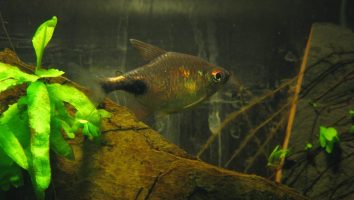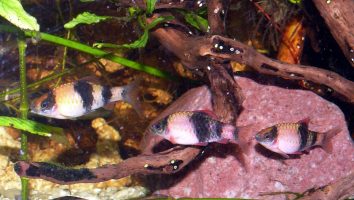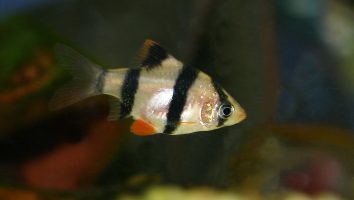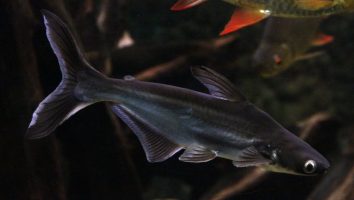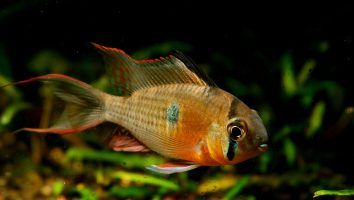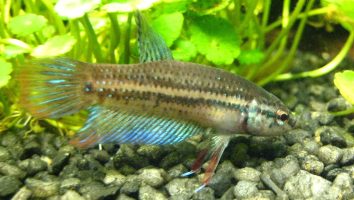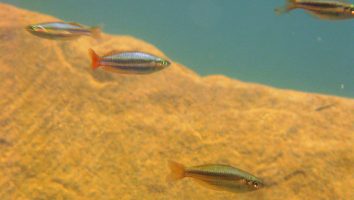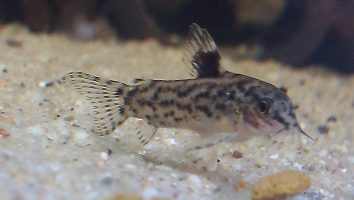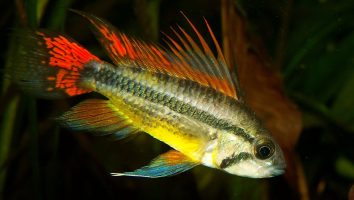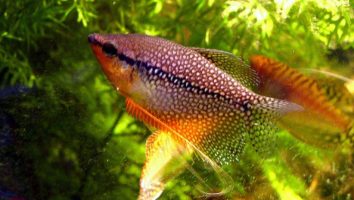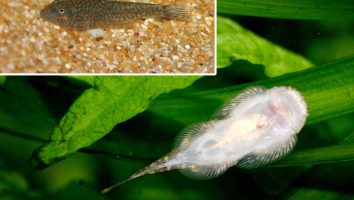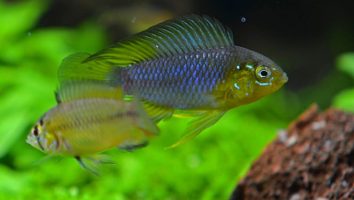The ocellate river stingray is a freshwater fish that is native to the Amazon River Basin.
This species is a member of the stingray family and is known for its beautiful spotted pattern.
The ocellate river stingray is a popular fish in the aquarium trade and is sought after by many fishkeepers.
If you’re thinking about getting one of these fish, you need to read this guide first. In it, you’ll learn everything you need to know about ocellate river stingray care.
Table of contents
Species overview
The ocellate river stingray (Potamotrygon motoro) is a species of freshwater stingray that’s found throughout a large portion of South America.
They inhabit rivers in countries like Argentina, Bolivia, Brazil, Colombia, Ecuador, Guyana, Peru, Suriname, and Venezuela.
This stingray prefers slow-moving waters with a lot of sediment and vegetation. Due to their large size, they need a lot of space to move around and are not suited for most home aquariums.
Ocellate river stingrays are one of the most popular species of stingrays in the aquarium trade. They are prized for their unique coloration and patterns.
Appearance
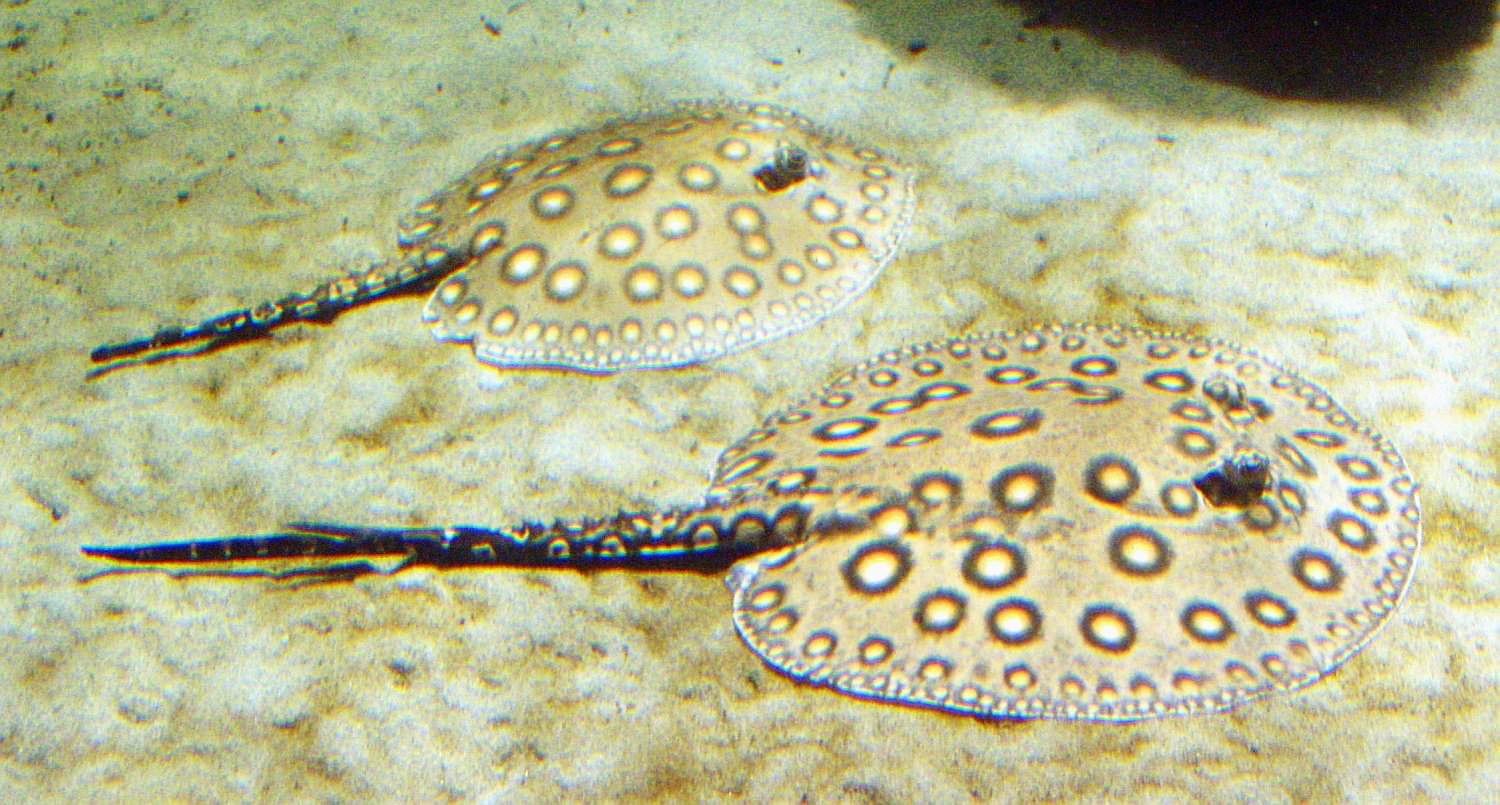
Ocellate river stingrays are one of the more unique looking freshwater fish out there. They have a very distinct diamond-shaped body with large pectoral fins that make up a good portion of their sides.
These fins are used for steering and stopping as they make their way through the water. Speaking of water, Ocellate river stingrays are well-adapted to living in rivers with fast-moving currents.
The coloration on these fish is very striking. The background color is usually a light brown or beige. This is then dotted with black spots that are arranged in a diamond pattern (hence the name).
The spots on the dorsal (top) side of the fish are larger than the spots on the ventral (bottom) side. Males tend to have more distinct and larger spots than females as well.
The tail of these stingrays is long, thin, and whiplike. At the very end of the tail, you’ll find a stinger. This stinger is used for self-defense and is venomous.
While the venom isn’t deadly to humans, it can still cause a lot of pain. It’s best to avoid getting stung if at all possible!
Lifespan
The lifespan of an ocellate river stingray in captivity is largely unknown. There are no reports of any ocellate river stingrays living for more than a few years in captivity.
In the wild, these fish can live for up to 25 years. However, they are very sensitive to changes in their environment and often do not do well in captivity.
Size
The ocellate river stingray is a freshwater fish that can grow to be quite large. They have been known to reach lengths of up to 6.6 feet (2 meters) and weigh over 220 pounds (100 kilograms)!
Tank
Tank Size
The recommended minimum tank size for an Ocellate river stingray is 500 gallons. If you’re looking for a freshwater fish that can fit in an average-sized tank, this is not the fish for you.
If you want to keep two Ocellate river stingrays in the same tank you’ll want to add at least another 500 gallons to that minimum number if you want them to thrive.
Another reason why you need to provide enough space is for the sake of enrichment and comfort. These fish like to roam and will often run gentle but steady laps around your tank. Giving them a little bit of extra space can go a long way in making sure they can comfortably turn around in the tank.
Water Parameters
The ocellate river stingray is a freshwater species that is found in the rivers and streams of Central and South America.
They are a hardy species that can tolerate a wide range of water parameters. However, it is important to maintain consistency to avoid stress and health issues.
Here are a few guidelines to help you create a healthy environment for your ocellate river stingray.
- Water Temperature: 70 to 86 degrees Fahrenheit
- pH Levels: 6.5 to 7.5
- Water Hardness: 4 to 20 dGH
- Alkalinity Levels: 3 to 8 dKH
What To Put In Their Tank
The ocellate river stingray is a species of freshwater fish that is native to the Amazon Basin.
When it comes to setting up the inside of their tank, there are a few key things that you need to take into consideration.
The first is the substrate. These fish love to burrow and will do so frequently. A soft, sandy substrate is ideal since it’s easy for them to move around in and won’t damage their skin.
The second is the plants. These fish are not plant-friendly and will uproot or eat anything that you put in their tank. We recommend avoiding plants altogether to prevent any issues.
The third is the décor. These fish love to hide and feel safe, so including hiding spots is a must. Driftwood, caves, and rocks are all great choices. Just make sure that any rocks you use are smooth so they don’t scratch the fish.
Common Diseases
The Ocellate river stingray is a hardy fish that is resistant to most diseases. However, there are a few illnesses that they are susceptible to.
The most common disease that these fish get is bacterial infection. This is usually the result of a cut or scrape.
The best way to prevent this is to make sure that the environment in their tank is clean and free of any potential hazards.
Another disease that these fish can get is parasites. The most common type of parasite that affects stingrays is the gill fluke.
This is a small parasite that lives in the gills of the fish and can cause a lot of problems if it’s not dealt with.
The best way to prevent parasites is to quarantine new fish before adding them to your tank. This will give you a chance to make sure they don’t have any parasites that could potentially infect your other fish.
Behavior & Temperament
The ocellate river stingray is a bottom-dweller that is known for its shy and retiring nature. These fish are not aggressive and will usually only attack if they feel threatened.
They are a peaceful species that is not known to bother other fish. However, they can be territorial with other stingrays and may fight if they feel their space is being encroached upon.
Ocellate river stingrays are not known to be good jumpers, but they can be good swimmers. They will often swim close to the bottom of their tank or hide in the substrate.
These fish are shy by nature and can be easily scared. They may try to flee if they feel threatened. As a result, it is important to have a tank that is large enough for them to feel comfortable and safe.
Tank Mates
Ocellate river stingrays are not easy fish to keep. They’re rare, expensive, and require a very specific setup. As a result, they don’t have a lot of compatible tank mates.
These fish need a large tank with plenty of hiding places and a soft, sandy substrate. They’re also sensitive to water quality and need pristine conditions to thrive.
Because of all these requirements, the best tank mates for ocellate river stingrays are other ocellate river stingrays. These fish are social creatures and do best in groups.
If you’re determined to keep other fish with your ocellate river stingrays, your best bet is to choose species that occupy different parts of the water column.
Some compatible fish include:
- Silver Arowana
- Fire Eel
- Green Terror Cichlid
- Jaguar Cichlid
- Oscar Cichlid
- Pleco
Breeding
For the ocellate river stingray, it is best to set up a tank that is at least 180 gallons in size. The tank should have a sandy bottom and plenty of hiding places. Rocks, driftwood, and plants can all be used to create hiding spots.
It is also important to have a good filtration system. Ocellate river stingrays are messy eaters and produce a lot of waste. A canister filter or sump system is best.
The water temperature should be kept between 77 and 86 degrees Fahrenheit. The pH should be between 6.5 and 7.5. The water should also be on the softer side, with a hardness of 10 dGH or less.
When ready to breed, you will need to add one male and two females to the tank. The female ocellate river stingrays will be larger than the males.
To trigger spawning, the water temperature should be increased to 86 degrees Fahrenheit. The male will then start to dig a pit in the sand. Once the pit is completed, the female will lay her eggs in it. The male will then fertilize the eggs.
After about two weeks, the eggs will hatch. The fry will be tiny, so they will need to be fed small live foods. Baby brine shrimp or microworms are good options. As they grow, you can start to add larger live foods and then eventually move them onto pellets or flakes.
Conclusion
The Ocellate River Stingray is an absolutely stunning fish that is sure to turn heads whenever someone sees it.
Their unique appearance is only matched by their personality, which is said to be very friendly.
They’re also a very hardy fish, so they can withstand a lot of different conditions.
The only downside to this fish is that they can get quite large, so you’ll need to make sure you have a tank that can accommodate them.
Other than that, we think they make an excellent addition to any aquarium!

